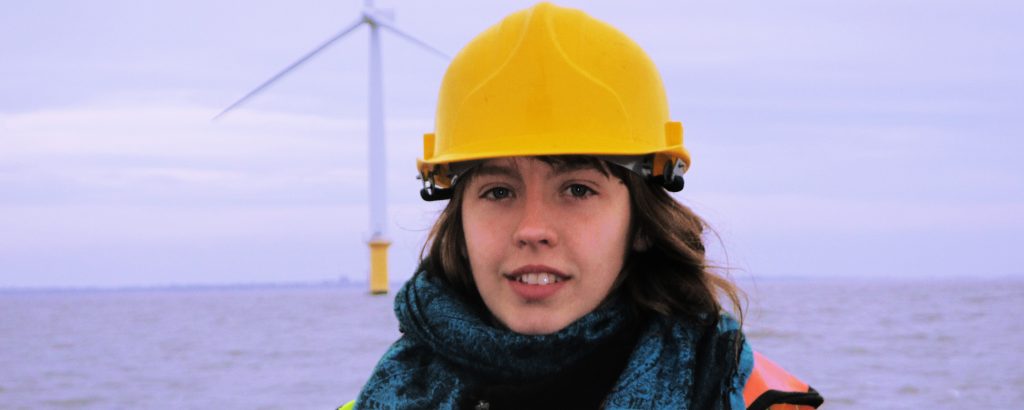
Maritime archaeologist Christin Heamagi on site
Gunfleet Sands 3 Wind Farm Demonstration Project
Maritime Archaeology Ltd has carried out a number of studies in order to inform planning and construction of the Ørsted Energy Gunfleet Sands Offshore Wind Farm since 2003. This wind farm is located 7km off the Essex coast with a total installed capacity of 173MW, providing clean renewable electricity to approximately 125,000 households – or more than 20% of the households in Essex in the years to come.
Gunfleet Sands 1 consists of 30 turbines each of 3.6MW and Gunfleet Sands 2 consists of 18 turbines each with a capacity of 3.6MW. In 2012 we were engaged to assist with the Gunfleet Sands 3 Demonstration Project for two next generation high capacity 6MW offshore wind turbines. Through a multi-disciplinary approach, we provided a comprehensive package of archaeological advice and assessments in order to ensure that our client could carry out the development efficiently, and in a way that prevented negative impact on archaeological features.
We were selected after a rigorous tendering process to produce the Archaeological Written Scheme of Investigation (WSI) for the project, and to deliver a strategy to engage heritage curators, academics, contractors and other stakeholders.
Our archaeologists followed this by assessing and interpreting a range of archaeological and geophysical data. This included a variety of techniques, including sub-bottom, side scan and multi-beam sonar which were used alongside magnetometry to create a clear and detailed image of the seabed. During this process we identified a number of previously unknown anomalies and developed mitigation strategies including carefully considered archaeological exclusion zones.
Through geoarchaeological assessment we also advised Ørsted Energy of both the palaeoenvironmental and geomorphological characteristics of the survey area to identify any significant environmental deposits. Following established best practice, sub-samples were taken from boreholes and vibrocores onshore and offshore for detailed inspection. This allowed our client to put in place mitigation measures during planning and construction, and to learn as much from this important paleaoenvironmental material as possible while simultaneously helping to drive the Project forwards.
Finally, we delivered a programme of onshore and offshore watching briefs during construction with an archaeologist recording and observing both onshore and on the survey vessel. If archaeological material was identified our experienced field team were ready to be deployed quickly for detailed assessment and to advise on any mitigation action.
Overall, throughout this project we provided a staged and pre-costed approach to this project in advance so as to ensure that the development proceeded without undue costly delay. Furthermore, the results of our geoarchaeological study will be available in the public domain for future study. And it is the value of this data that will offset any low-level impact of the development in the region.
Read more about our archaeological and geoarchaeological services
